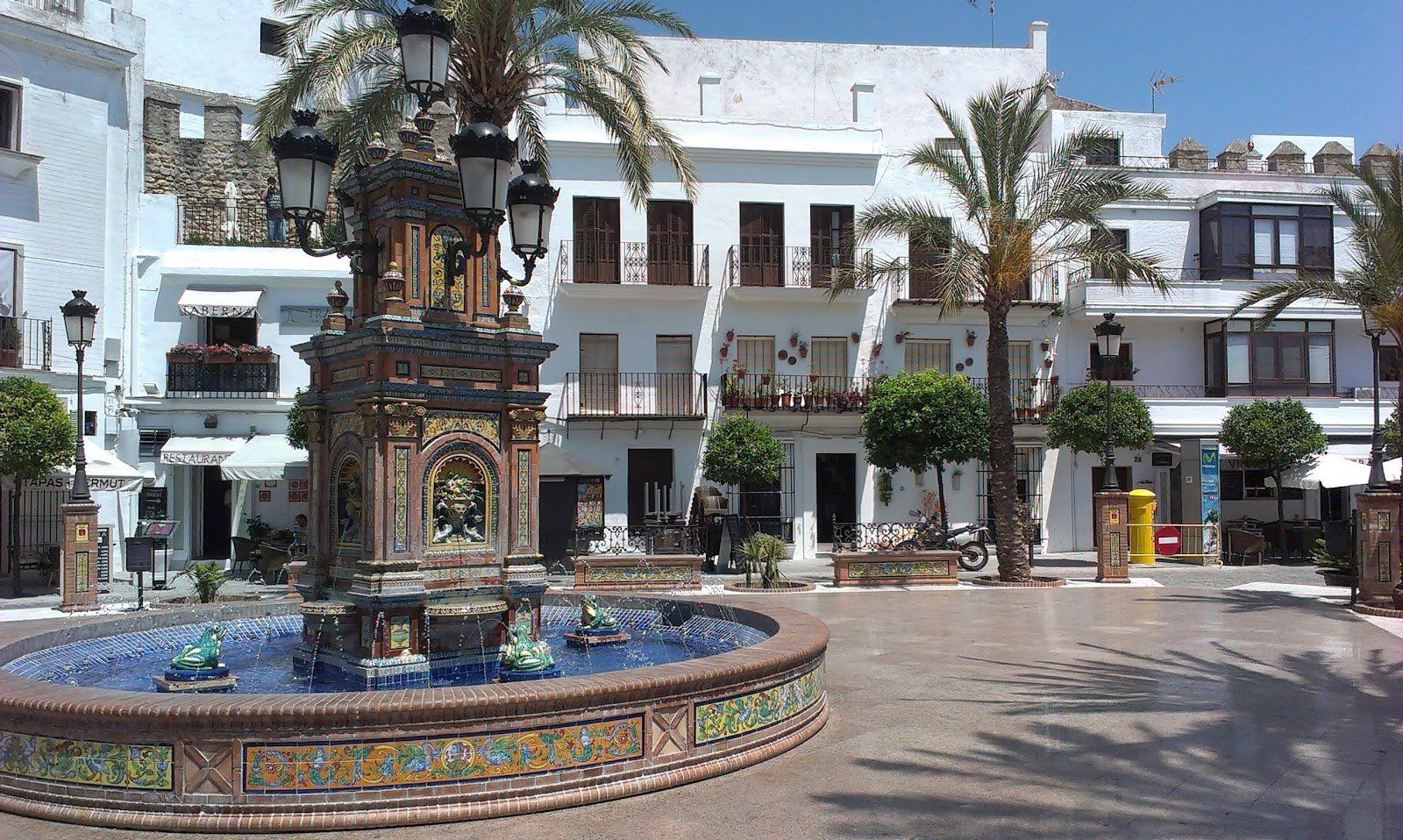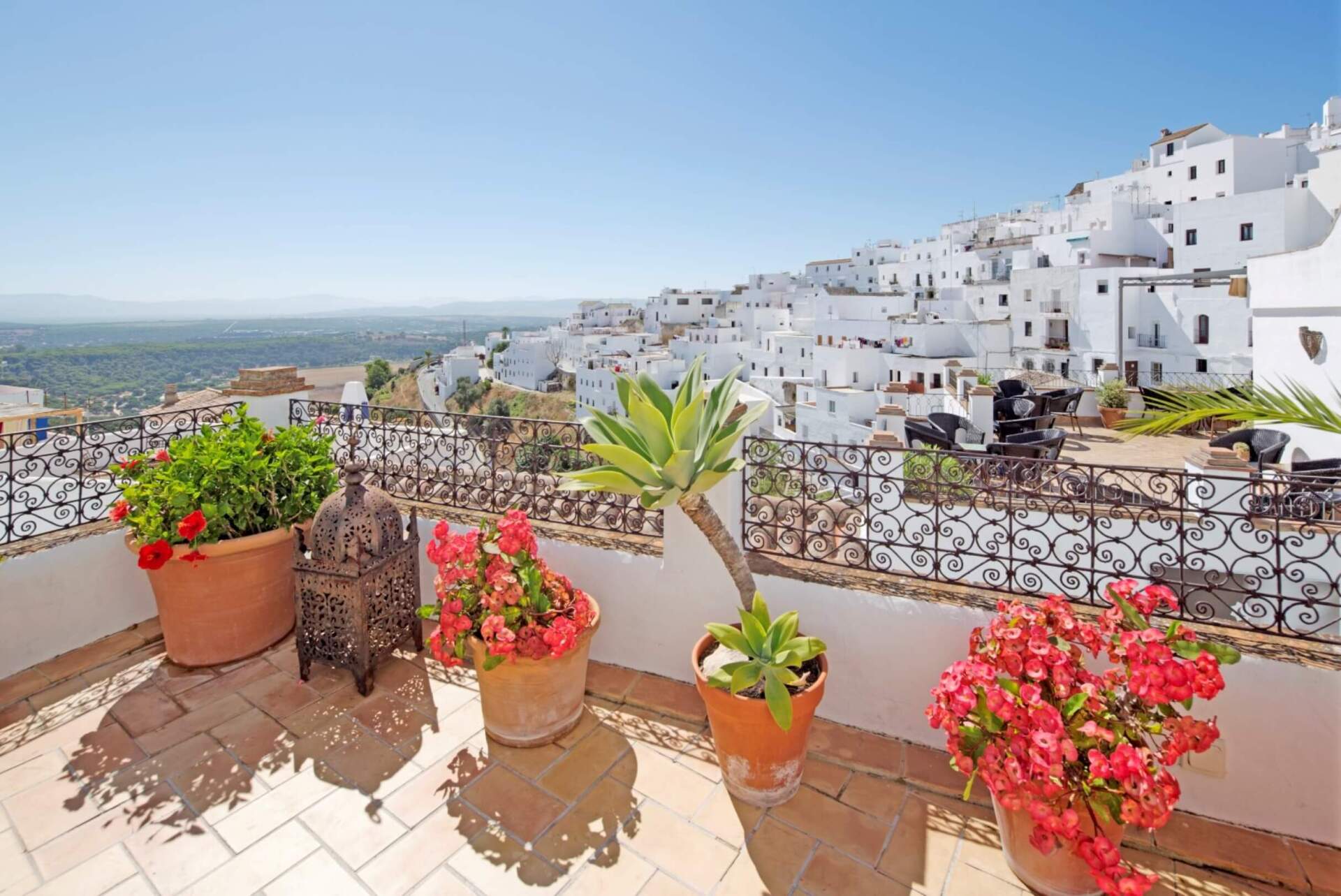Embark on a private day trip from Cadiz to the stunning white village of Vejer de la Frontera. We will journey along the picturesque coastline, stopping at this remarkable Andalusian gem, beautifully situated on a high hill. Vejer is renowned for its maze of winding paths and cobbled streets that lead to the impressive Castillo de Vejer de la Frontera.
The "De la Frontera" villages are celebrated as some of the most scenic and well-preserved in Spain, and Vejer is officially recognized as one of the country's most captivating villages—it's easy to see why!
Delve into the rich local history of Vejer, dating back to 1000 BC, with influences from the Phoenicians, Carthaginians, Moors, and Christians, all the way to the present day.
Learn about the significance of the Vejer region during the Moorish conquest and the subsequent Christian reconquest of Spain. Stroll through its narrow, winding streets, marvel at the whitewashed houses, explore the ancient Moorish castle, and admire the main church, which showcases two distinctly different architectural styles, all while soaking in the breathtaking views that surround the village.
On our return to Cadiz, enjoy a panoramic drive around this beautiful city.
Private Shore Excursions from Cadiz and Day Trips to Vejer de la Frontera.
- Season: All year.
- Scheduled days: Available Daily. (Subject to availability)
- Departure time: From 9am or choose your ideal departure time.
- Duration:
Approx. 6 hours.
- Pick up point:
From your accommodation in Cadiz and Cadiz cruise port.
- Return point: To your accommodation in Cadiz and Cadiz cruise port.
- Included:
Private vehicle, local English speaking driver, visit of Viejer de la Frontera with private local guide for 2-hours and free time .
- Not included: Gratuities, food, drinks and all other expenses.
Vejer, due to its strategic location, was once home to some of the oldest civilizations in southern Europe, including the Phoenicians, Carthaginians, and Romans. Following the Roman era, Visigothic villages emerged in the region, particularly around the lagoon situated just 8 km away.
After falling to the Arabs, Vejer remained under Muslim rule for 539 years, during which time they indelibly shaped the character of the city—evident in its narrow, winding streets, the modest facades of its houses, which conceal vibrant inner courtyards, as well as in the traditions that its inhabitants have preserved through the ages, and even in their traditional attire, worn by the elderly women known as the "sheltered," which masked their faces until only recently.
In 1250, Ferdinand III the Saint recaptured the city for Castile, solidifying its role as a frontier stronghold against Muslim influence, leading to its nickname. Over the subsequent centuries, Vejer served as a crucial watchtower for the defense of the fishing rights held by the Dukes of Medina in Zahara, El Palmar, and Conil.
The coastal waters were the backdrop for the famed Battle of Trafalgar, where the Franco-Spanish fleet met defeat at the hands of the British. In the 15th century, Vejer separated from the municipality of Conil de la Frontera, claiming a third of its territory, and in 1939, Barbate also became independent.
In 1976, the city of Vejer de la Frontera was designated a Historic-Artistic Site, and it received the National Prize for Beautification of Towns in 1978. Today, Vejer stands proudly as a testament to the finest examples of Arab-Andalusian popular architecture.
Please contact us regarding prices and tours.



